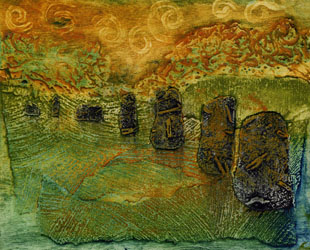A brief guide to printmaking
My prints are all original artworks - they are not reproductions. I have designed, carved and created each plate or block, inked up the plates and either passed them through a press or burnished them by hand. Original artist's prints are made by hand one at a time so each has small variations and is effectively unique.
Below I've given a brief explanation of the different methods I use, and I've also put together a glossary of printmaking terms. For images of different processes have a look behind the curtain and to see examples of my work, browse the original prints section of my shop. For more tips, tutorials, video clips and explanations of work in progress, see my Instagram or sign up to my free newsletter, 'Dapple Scrumping'.
Linocut or linoprint
A piece of lino (or sometimes a vinyl developed for printmaking) is carved in relief. This means the parts that are cut away don't show on the final image. Sometimes a different block is used for each colour in a print, but in a reduction linocut only one block is used, with more being carved away for each colour. This means there is no going back.
The reduction print shown here was made using a single block, carved and printed in 10 stages.
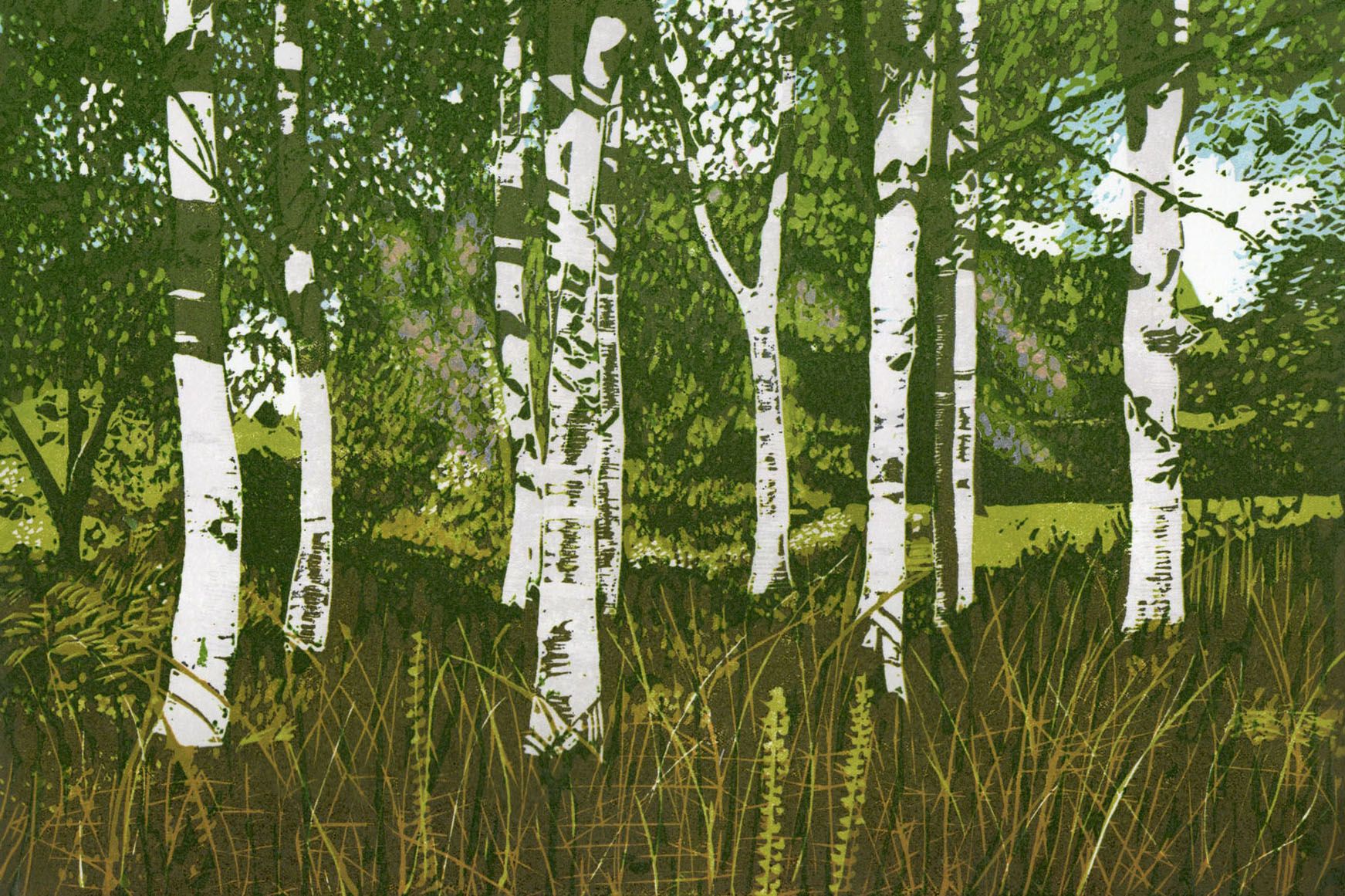
Woodcut or woodblock
This is also a relief method and the basic principle is the same as linocut, but the different material produces a softer and more textured effect.The print on the right was made with two blocks and has the addition of chine collé, which means collage elements are added at the same time as the ink image is printed on the paper; in this print the chine collé element is the children's red scarves made from cut and torn scraps of mulberry paper.
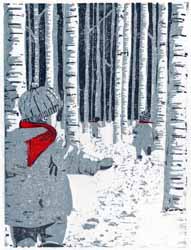
Moku hanga - Japanese watercolour woodblock
This is the traditional Japanese woodcut technique. Instead of rolling on ink, the blocks are brushed with watercolour paint and rice paste. The layers of colour are built up and shaded gradually as the printmaker hand burnishes the image onto fine paper.
This print was made with five separate woodblocks, with some being used more than once with varied applications of paint to create the blending and shading.
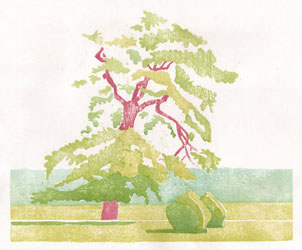
Drypoint etching
Unlike the previous three techniques, etching is an intaglio method. This means that the lines cut or scratched into a metal or acrylic plate are the ones which will show up on the final print. Ink is forced into the cut lines, wiped away from the rest of the surface, and then the plate is passed through a very high pressure press which pushes damp paper right down into the incised lines, picking up the ink.
Careful wiping of the ink can also create textures and lines on the flat surfaces, as in this print.
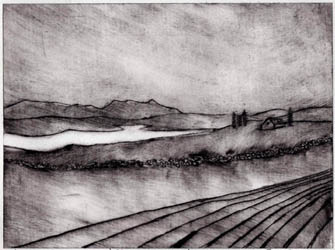
Collagraph
This method combines both relief and intaglio techniques. Blocks are created by building up collaged layers and using different textures. Ink can be applied using a variety of tools to create different marks before passing the block and dampened paper through an etching press. As well as the coloured image, the imprint of the block itself will be embossed into the paper.
The block for this print included textured wallpaper, pva glue, filler and scorching with a blow torch.
